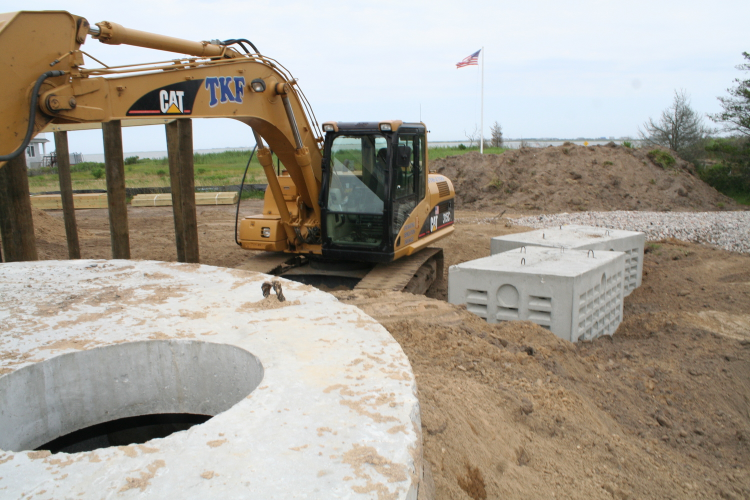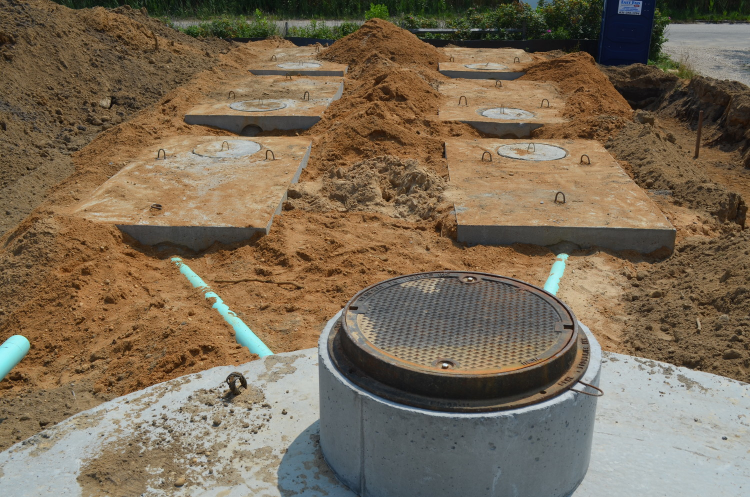I visited the site on Friday with Sunset Green Home's builder, Chris Mensch of Coastal Management LLC . He gave me a tour of the week's progress, which included the installation and inspection of Sunset Green Home's sanitary system.
Image courtesy of artur84 / FreeDigitalPhotos.net
Most of us never think about where our wastewater, laundry water, dishwater, or bathwater goes when it leaves the house. But if it's not being taken away by a municipal waste system, it has to go somewhere...and that somewhere is just beneath our feet.
Nearly one-quarter of American households are served by septic systems. Properly functioning sanitary systems pose little risk to human health. However, according to the United States Environmental Protection Agency (EPA), "when improperly used or operated, septic systems can be a significant source of ground water contamination." In fact, failed septic systems may release contaminants such as viruses, bacteria, phosphorous, and nitrogen into drinking water supplies and recreational water bodies. These contaminants are responsible for making people sick and damaging delicate animal and plant habitats.
“Over 75% of the nitrogen pollution coming into Shinnecock Bay comes from waste water (meaning septic tanks).”
At Sunset Green Home, we are particularly concerned about building a robust sanitary system, as the project is located on the shores of the Shinnecock Bay - an important recreational waterway and habitat for eel grasses and shellfish beds. As we wrote in a previous post, failed septic systems may account for harmful brown tides that our bays have seen in recent years. In fact, according to Christine Santora, Program Coordinator for the Shinnecock Bay Restoration Program, "over 75% of the nitrogen pollution coming into Shinnecock Bay comes from waste water (meaning septic tanks).”
So what is a septic system anyway?
A septic system is a highly localized waste treatment facility with three components: a septic tank, a leaching field, and the soil beneath the leaching field.
Sunset Green Home's septic field, tank and leaching pools, ready to be installed
The septic tank, a watertight box generally made of cast concrete, receives wastewater as it leaves the home. Solid waste settles to the bottom of the tank and forms a "sludge" layer, where bacteria set to work breaking it down. Liquids form a middle layer, and are directed out of the tank via piping to the leaching field. Oils and other substances that are lighter than water form a layer of "scum" that rises above the liquid in the tank.
Sunset Green Home's septic tank set into place
As new waste enters the septic tank, the liquid effluent already in the tank is displaced out to the leaching field.
Leaching pools control the release of effluent into the leaching field, where the effluent is filtered as it percolates through the soil and where soil-borne bacteria further break down any organic material within it. Eventually, some of the effluent reaches groundwater.
Sunset Green Home's septic tank and leaching pools
Sunset Green Home's leaching field comprises several cast concrete leaching pools, each of which is set atop a layer of pure sand and is kept a minimum of three feet above ground water.
Completed septic system, back-filled and trenched for retaining walls
Sunset Green Home's compact septic system was designed with rectangular leaching pools and located as far away from the Shinnecock Bay as possible. Because our water table is so high, our septic system had to be elevated above the property's current grade, and then covered with sand and clean fill. Now that the septic system has been inspected and approved by the Suffolk County Department of Health Services, we can build the retaining walls that will surround the system.
Shinnecock Bay in front of the Sunset Green Home project
We look forward to canoeing and kayaking with the confidence that our sanitary system is doing its job of keeping harmful contaminants out of the bay!






